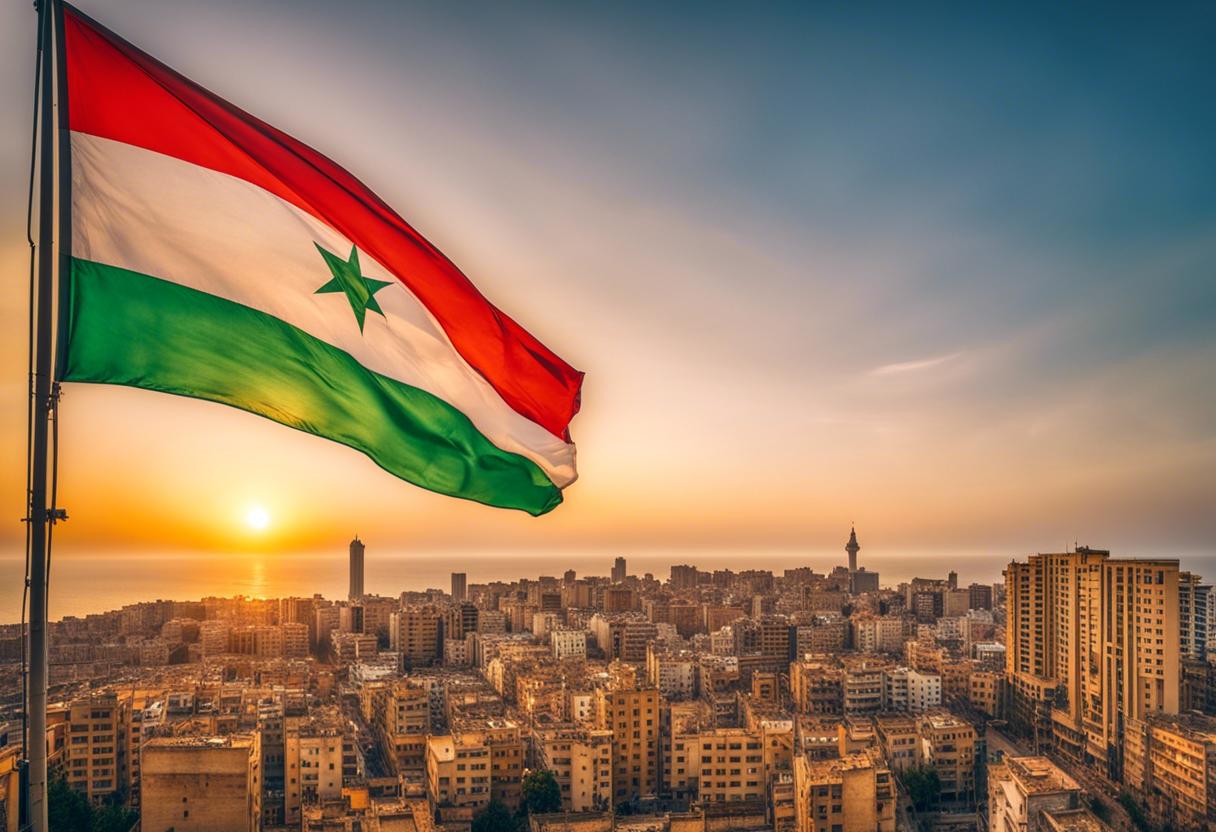In the narrow paths of Shatila refugee camp situated in southern Beirut, a group of Palestinian children unite in a dance, synchronising their movements and clapping along to the rhythm of the music. Their teacher, Mohammad Abdel Latif Al-Hajj, who learned the traditional Palestinian folk dance, Dabkeh, from his late father while living in the camp, assists them. Al-Hajj sees this dance, steeped in tradition, as a reminder for the children of Palestine’s emphatic existence.
Their classes are held in a community centre nestled amongst the slender lanes of Shatila. This centre, known as Beit Atfal Assomoud (The House of Resilient Children) is an enterprise of an NGO and provides a variety of social services and a nursery. Hanging in one of the classrooms, there’s a poster serving as a reminder of the declaration by Arthur Balfour, the British ex-secretary in 1917, supporting the creation of a national home in Palestine for the Jewish people. That day is marked with protests by the Palestinians today.
Within the walls of another room, a young girl sketches Al-Aqsa Mosque located in East Jerusalem, whereas another young boy fills colour into a large key. The key is an important Palestinian emblem that signifies the right to return for displaced Palestinians and their offspring who were forced to leave their homes in 1948 following the formation of Israel. Ashwak Ashabbi, a social worker at the centre, believes it is important for the children to comprehend why Palestinians reside in Lebanon.
Roughly 210,000 Palestinian refugees dwell in the isolated camps in Lebanon that are managed by the UN agency Unrwa. Internal security in these poverty-stricken camps is maintained by Palestinian factions and committees, whilst Lebanese forces stay absent. The Fatah party which leans towards secularism has traditionally been in control of camp administrations, but support for its opposition, the religious party Hamas, has seen an increase since its unforeseen attack in southern Israel on October 7th. This assault, according to Israel, resulted in 1,200 fatalities and over 200 hostages.
Shatila is adorned with fresh posters of Yahya Sinwar and Ismail Haniyeh, prominent Hamas leaders. These are accompanied by weathered flags of Fatah and images of the late Yasser Arafat and his less popular successor, Mahmoud Abbas. Fatah has been facing a decline in influence ever since Unrwa’s funding was slashed due to allegations by Israel of staff involvement in the October 7th assault. These allegations, however, lack concrete proof, as pointed out by Janez Lenarcic, the EU humanitarian chief. This has resulted in a shortage of jobs and limited resources at the camps under Fatah’s control.
Contrastingly, Hamas is attracting fighters in Lebanon by offering them a small monthly income and the elusive hope of a military triumph over Israeli forces. In their recent Gaza campaign, Israeli forces are stated to have caused the death of over 33,000 Palestinians, as reported by the health ministry run by Hamas. Muhammad Al-Khatib, aged 76, remarks that Fatah has been relatively silent since the war broke out. He states, while making it clear he belongs to neither parties nor follows their beliefs, “Hamas is battling for their freedom, how can we object to them?”
Al-Khatib was an infant when he and his family fled from Al-Khalisa, which was under the waning years of the British Mandate Palestine, to Lebanon in 1948. An Israeli family now occupies the house he once called home. After earning his medical degree in Spain, Al-Khatib worked for Unrwa in Shatila due to the prohibition on Palestinians working in Lebanese healthcare facilities. He says humorously, “I think I chose medicine by accident, as my thoughts usually gravitate towards literature.”
He now runs the Museum of Memories in Shatila in his retirement. There, in a humble room, he houses various artifacts that fleeing Palestinians carried from Palestine to Lebanon in 1948 such as coffee grinders, musical instruments, and saws. He also exhibits photographs portraying Palestinian life preceding 1948. He says with a sigh, “They want us to believe there was nothing there before Israel.”
Prior to the assault on October 7th, the concept of a Palestinian right of return was, to the people of Israel, generally conceived as a very real threat that could undermine the Jewish identity and majority of the nation. The Israeli government has since renewed its plea for Unrwa to desist from awarding successive generations of Palestinians with refugee status, and has pushed for host nations to instead completely assimilate them into their population with full citizenship rights. The political system of Lebanon, whilst built on a tenuous sectarian power sharing agreement, has already barred Palestinian refugees from engaging in the majority of job sectors within the country and even from owning property. Palestinians residing in Lebanon acknowledge that gaining Lebanese citizenship is unlikely, with the only exceptions being through marriage or traditional corruption.
In the instance that there is a political settlement to the conflict, which has raged for several decades, it may well be that the Israeli government permits a select few Palestinian refugees to return to Israel as a symbolic gesture. A more considerable portion may be given the right to return to any remaining Palestinian state territory in the West Bank and Gaza that has managed to resist encroachment. However, for 76-year-old Al-Khatib, sitting in a room filled with memories and a table supporting old keys to homes abandoned by Palestinian families, all he desires is to return home to Al-Khalisa.

